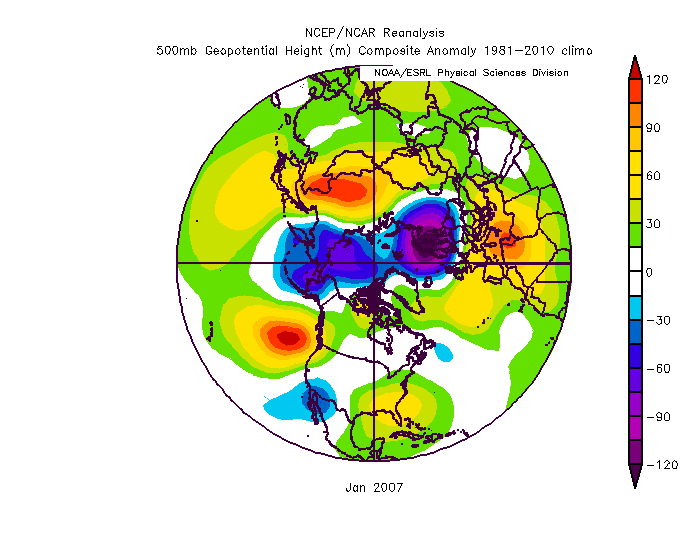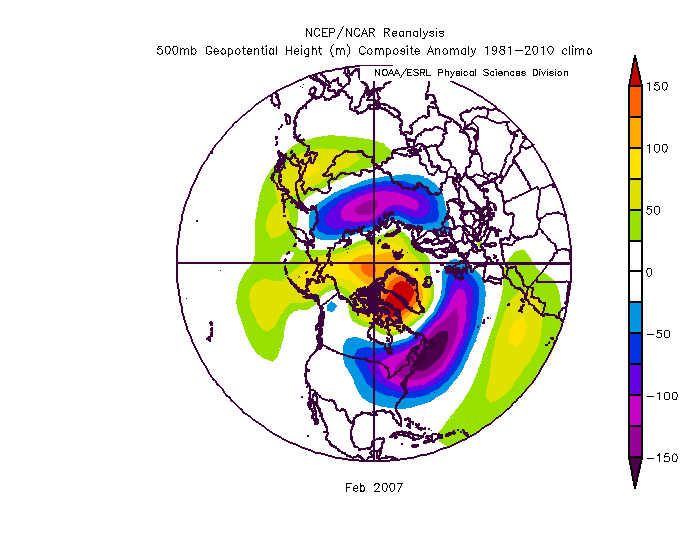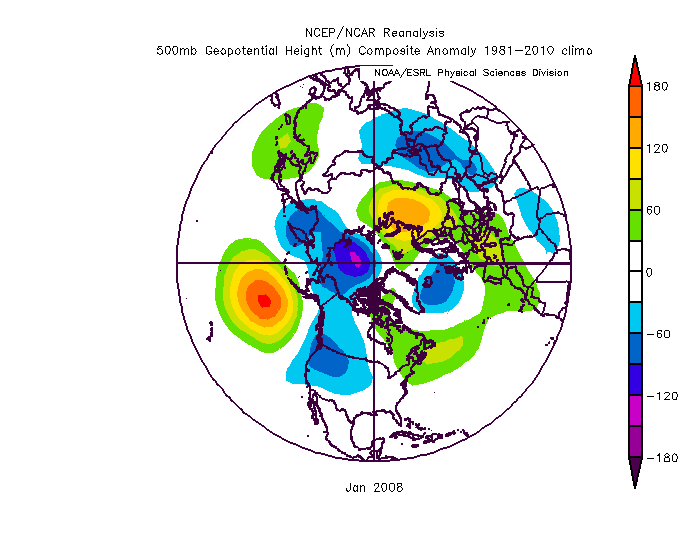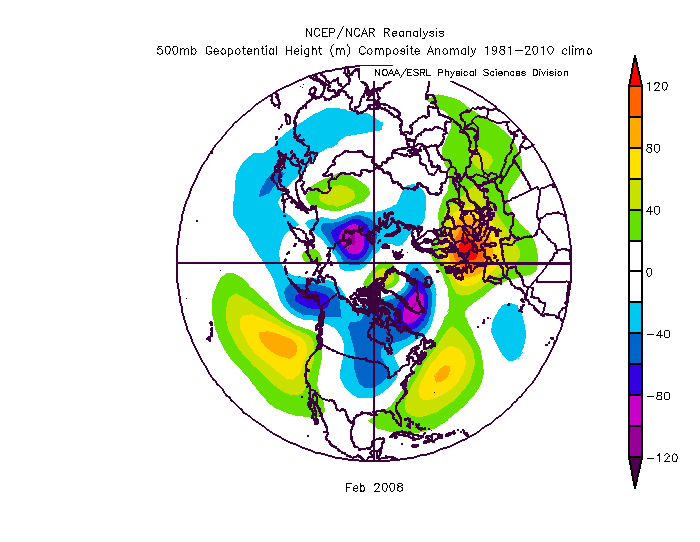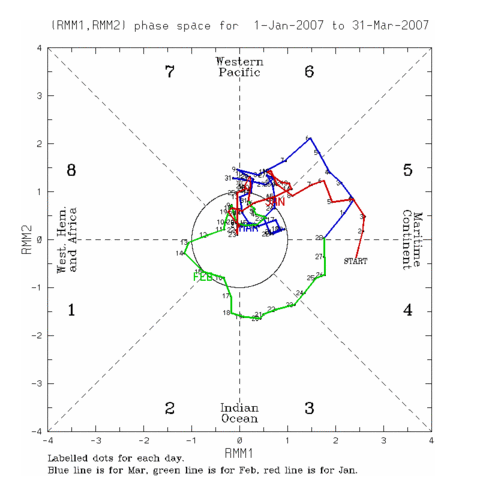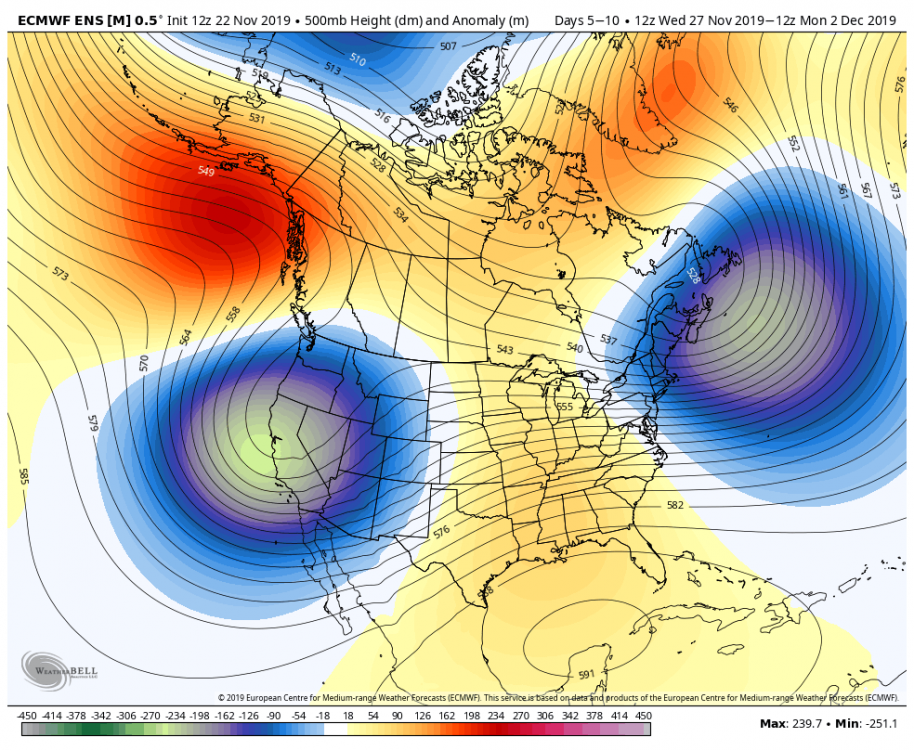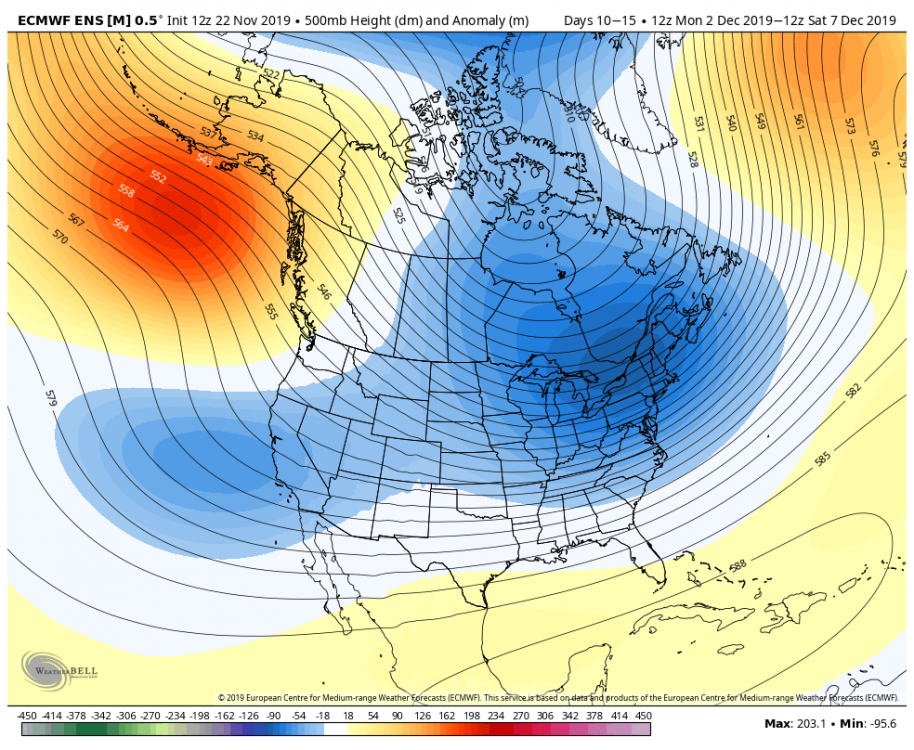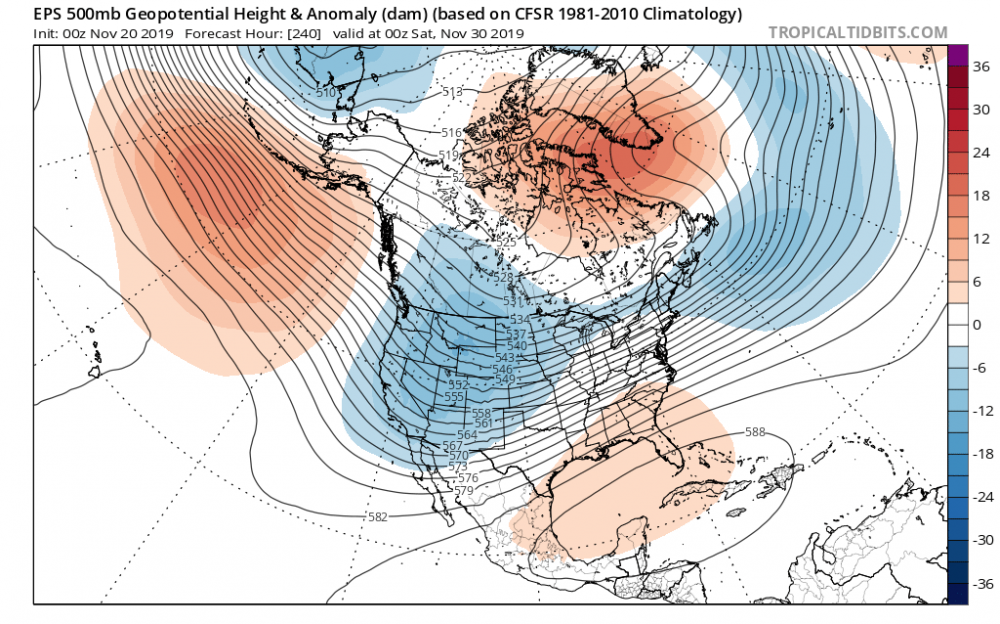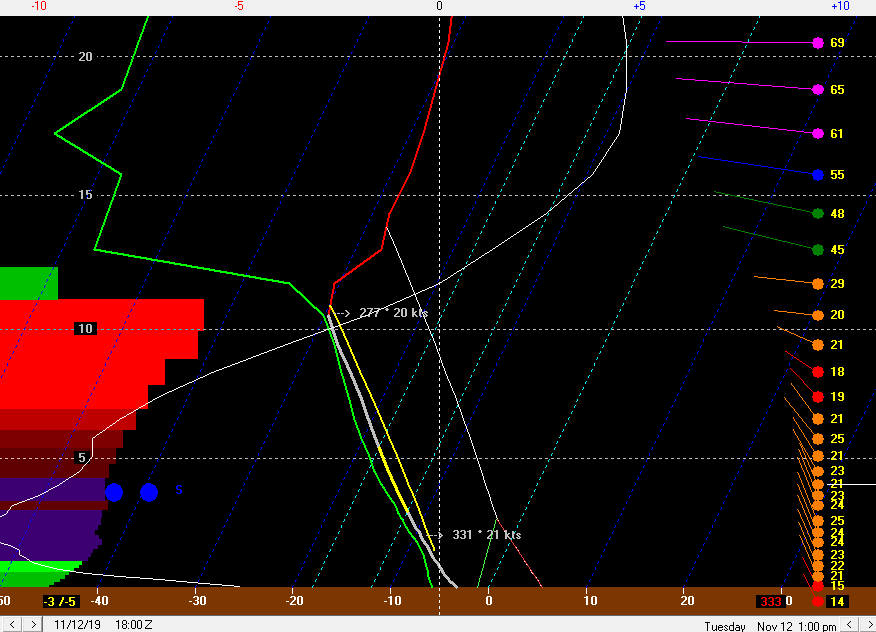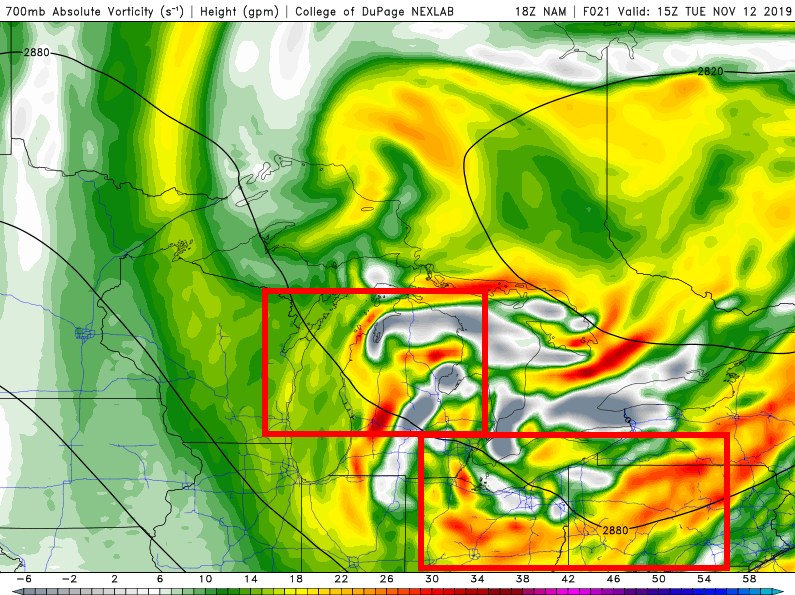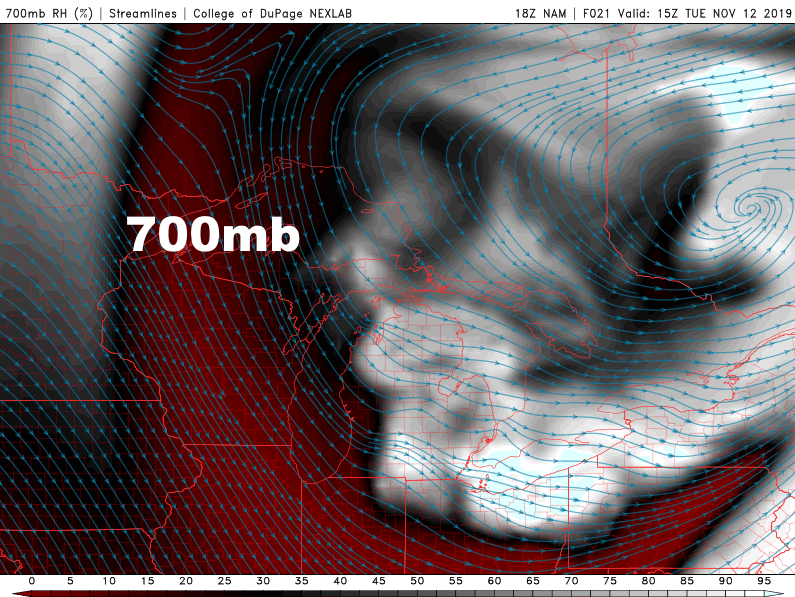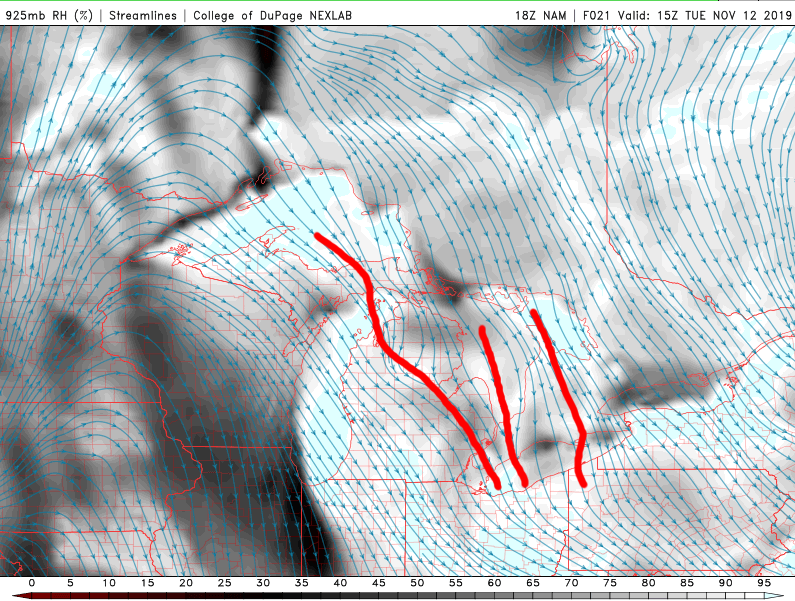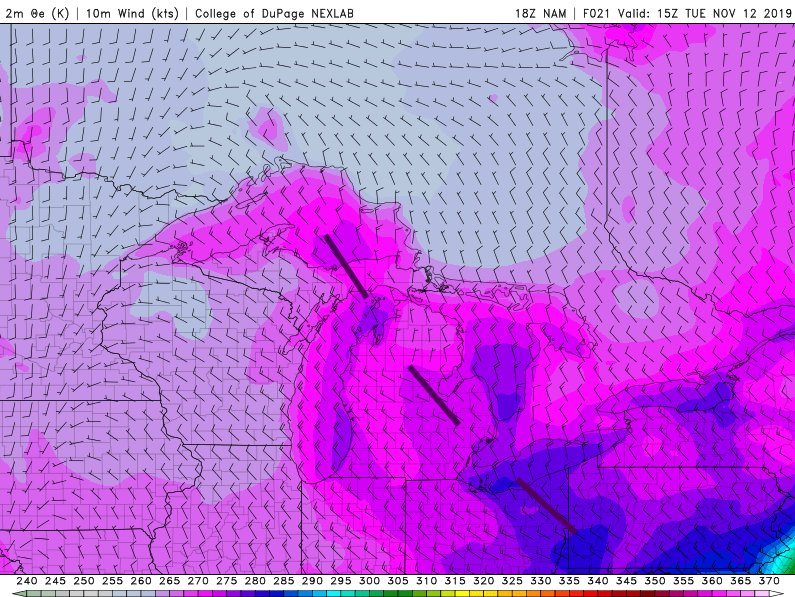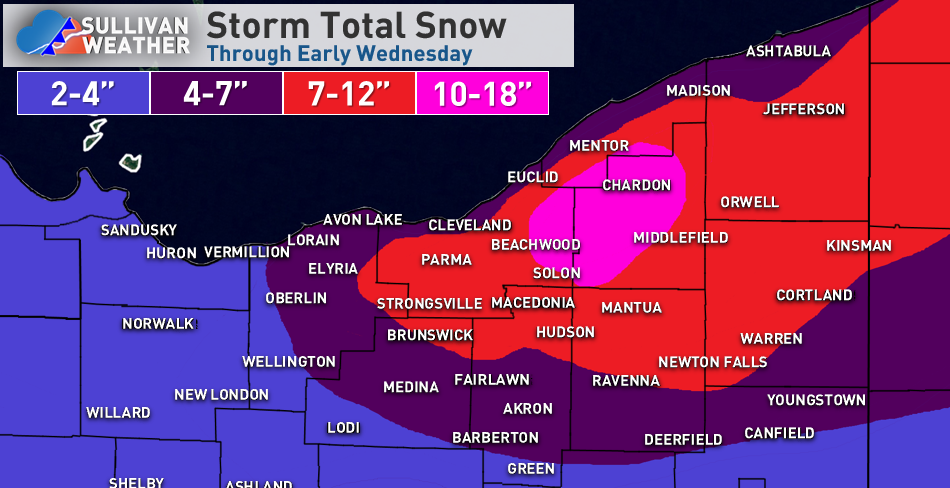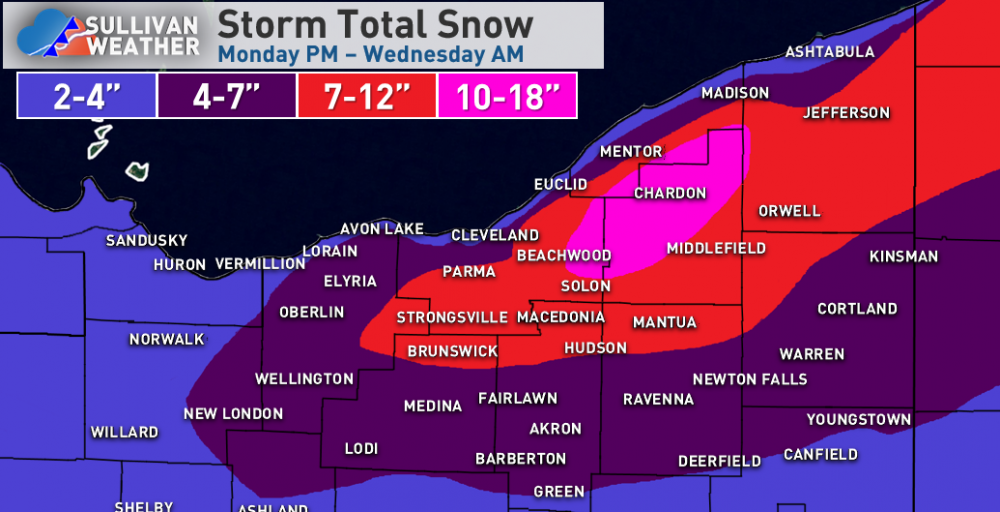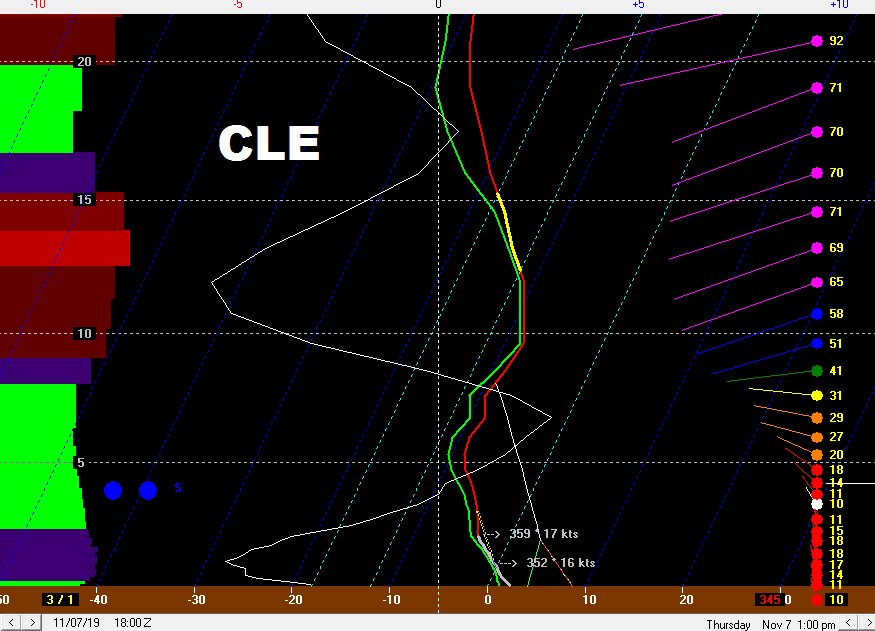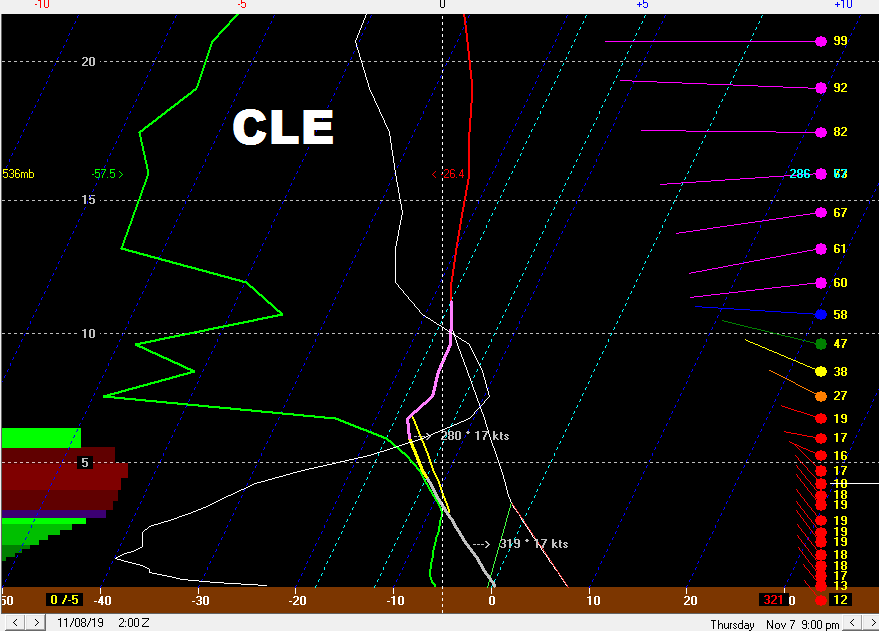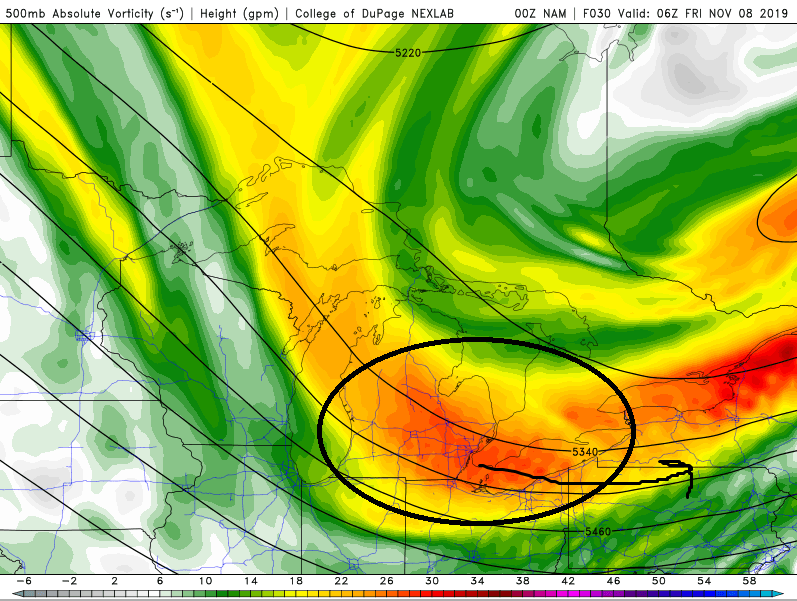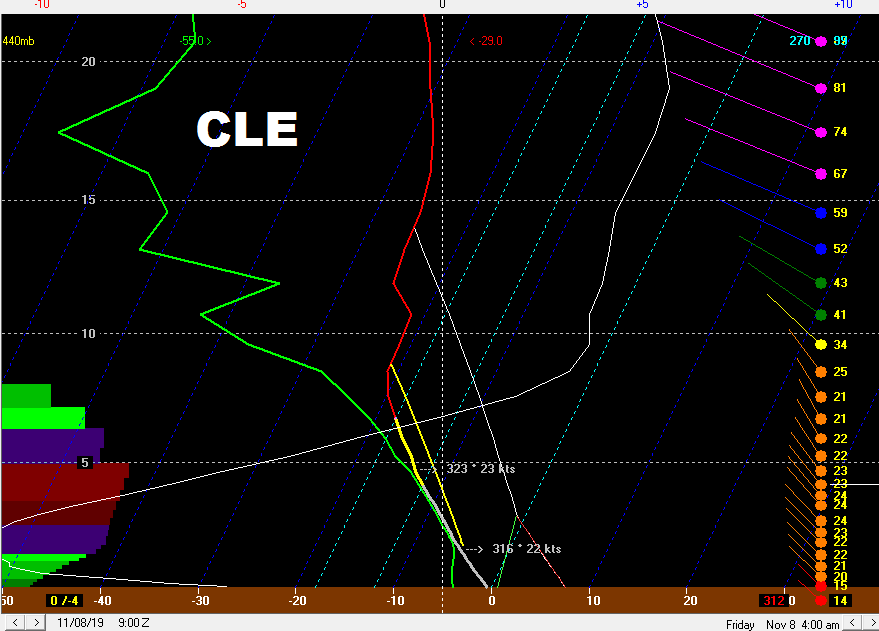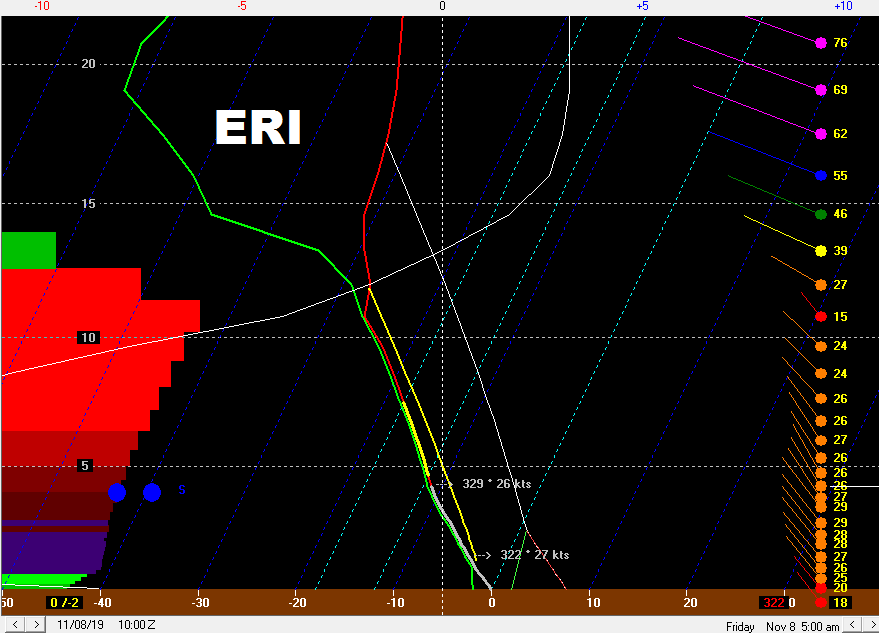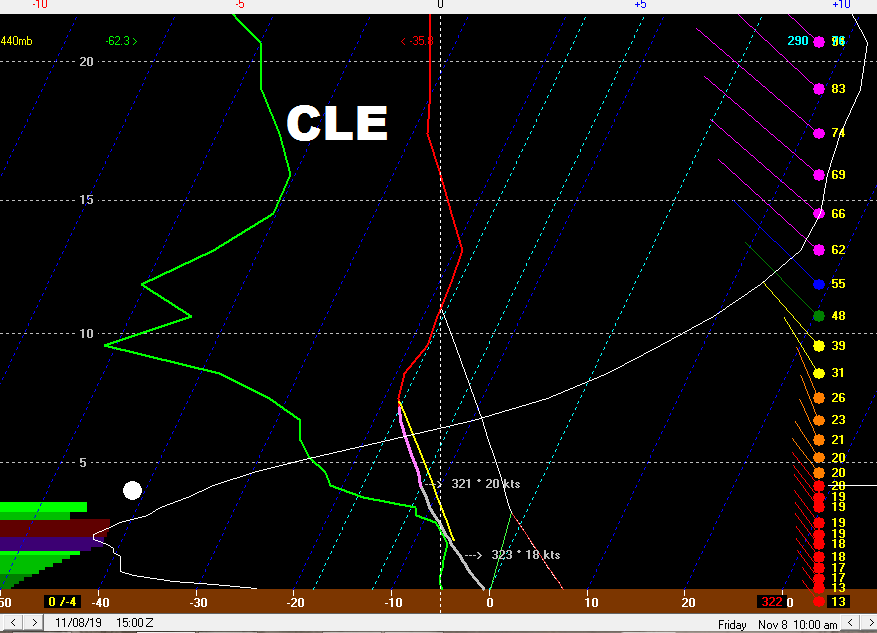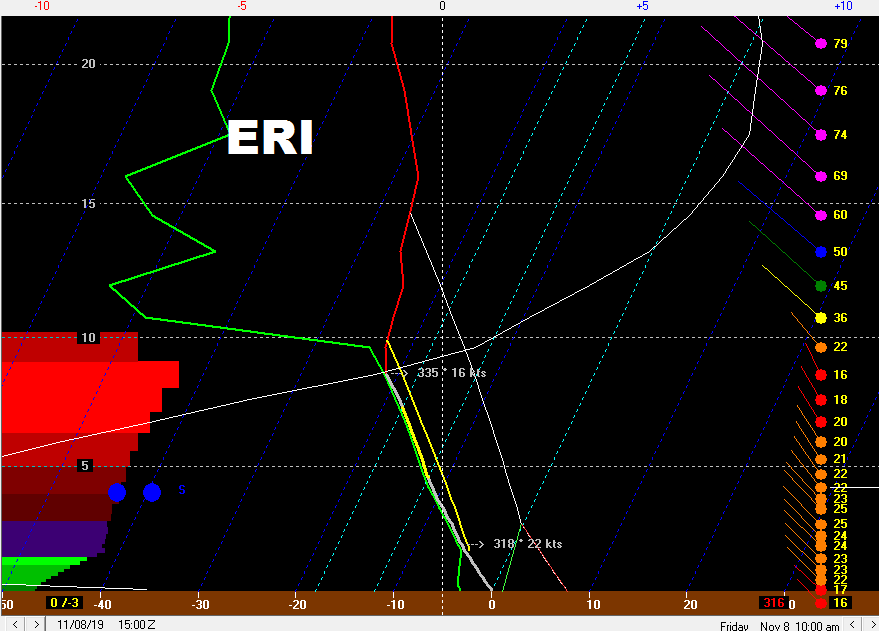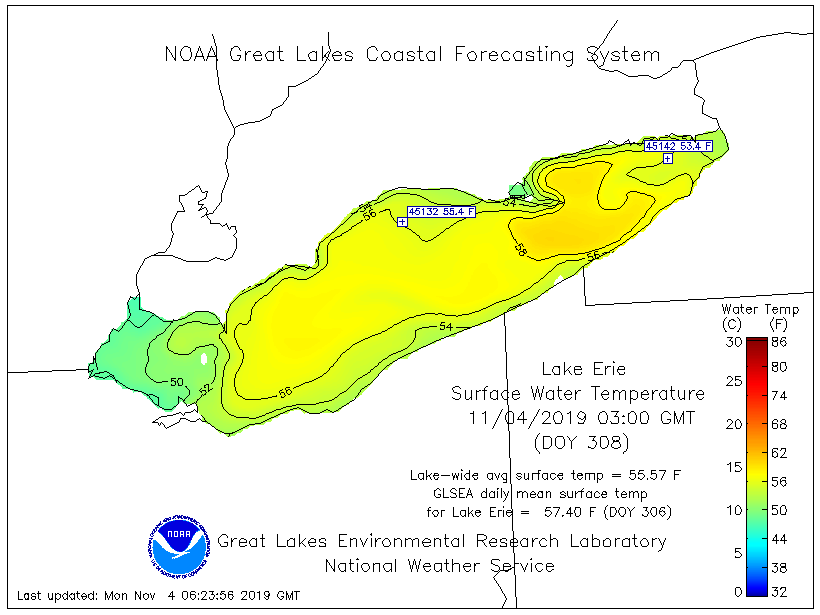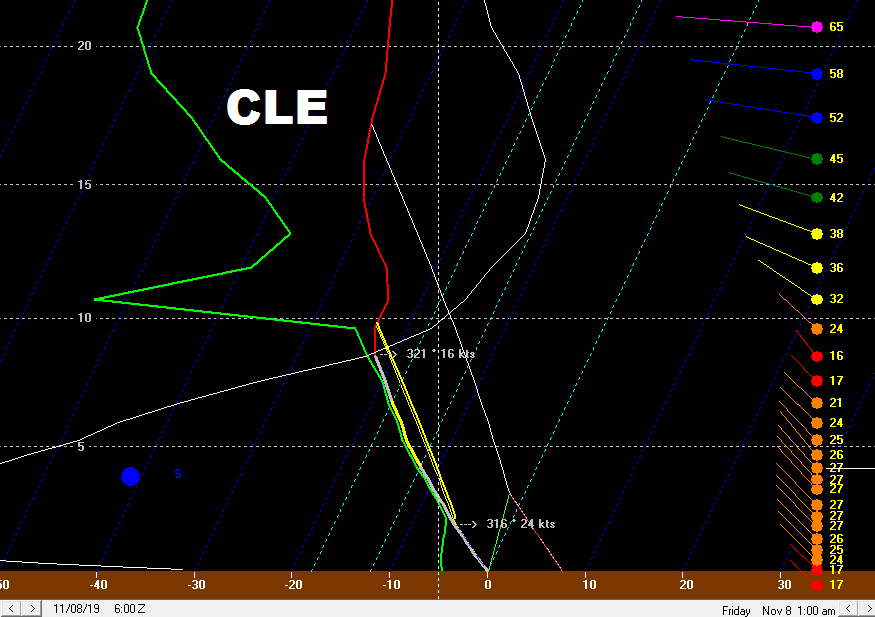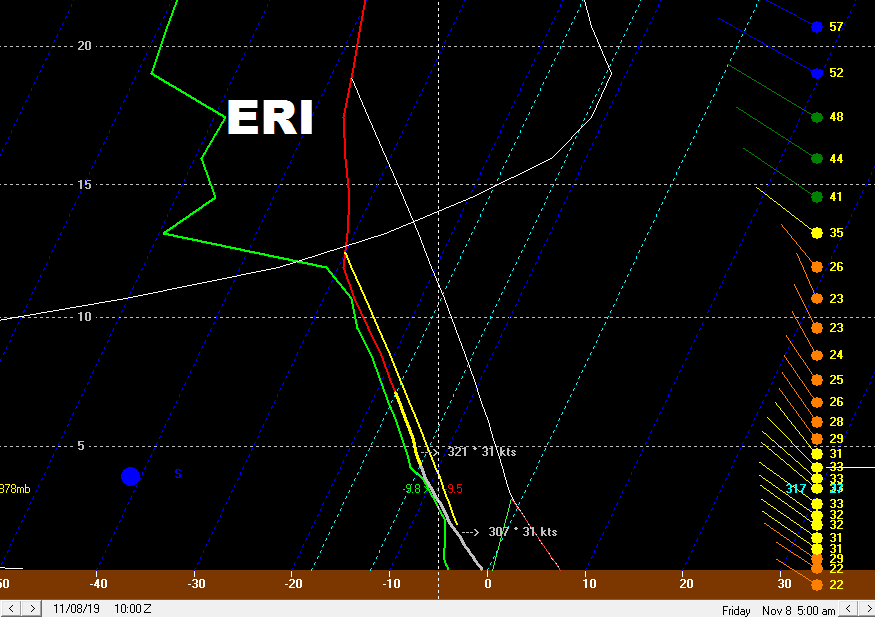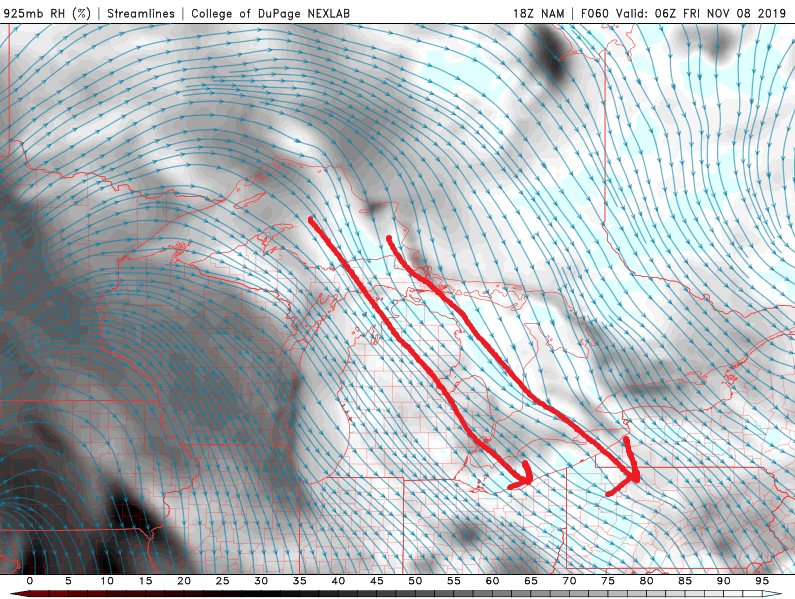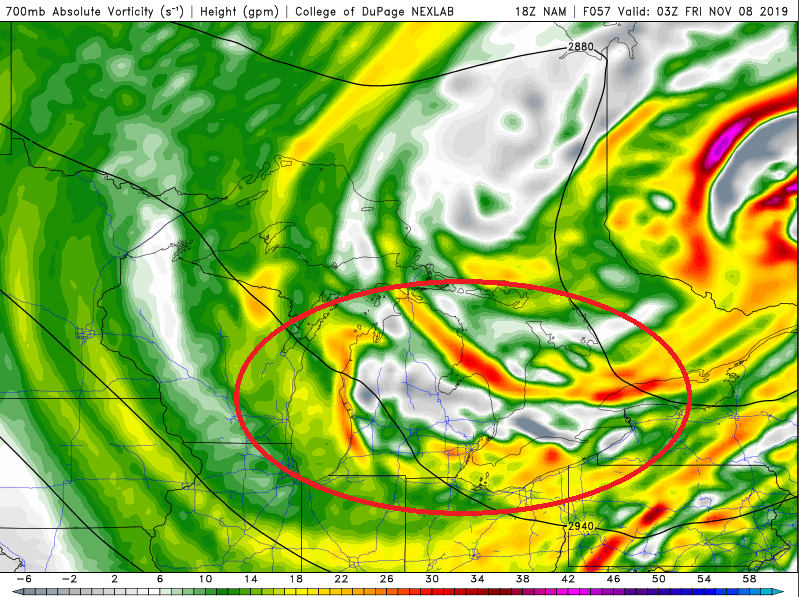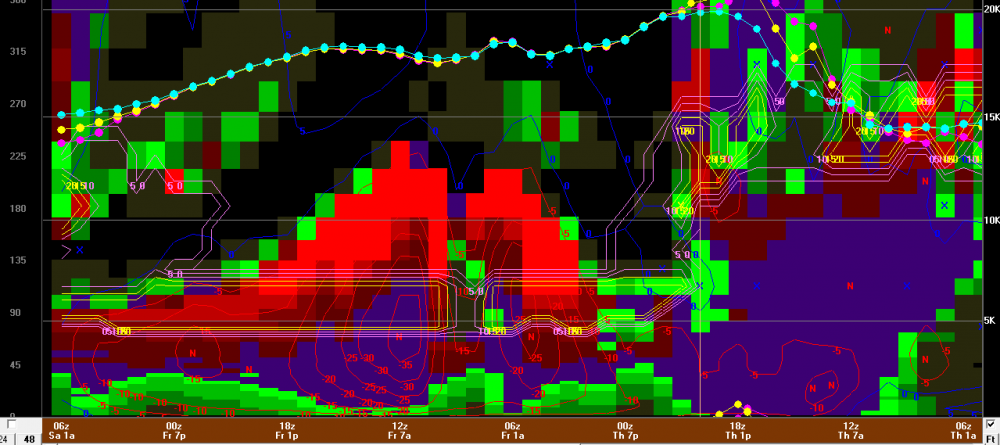
OHweather
Meteorologist-
Posts
4,997 -
Joined
-
Last visited
Content Type
Profiles
Blogs
Forums
American Weather
Media Demo
Store
Gallery
Everything posted by OHweather
-
The secondary Snowbelt has gotten crushed this evening...CLE has been reporting 1”/hour snow rates the last two hours with ratios of 50:1 if the liquid catch is accurate! KCLE 200451Z 24007KT 3/4SM -SN BR VV011 M07/M09 A3034 RMK AO2 SLP288 SNINCR 1/4 P0002 T10671089 400001089
-
Winter 2019-20 Medium/Long Range Discussion
OHweather replied to Hoosier's topic in Lakes/Ohio Valley
I'm just here to spread false hope of a pattern change that'll never come (though we're already setting things in motion this week with a brief -EPO that does dump a good amount of cold into Canada and the eastern half of the U.S.)... I don't totally hate the odds of a storm/event around the 23rd-25th across a good portion of the sub forum, with fairly strong ensemble support for a decent shortwave to eject out of the southwest. With some bootleg blocking across Hudson Bay, lower heights over the southeast, and surface ridging over the top ahead of this feature, I think there's a good shot it's wintry. 850mb temperatures are near normal (after being cold for a few days prior) and are workable with the ensemble mean 0C line south of the Ohio River ahead of this wave. If it deepens too quickly it would still cut and change the Ohio Valley to rain (or perhaps simply give them mostly/all rain), but places like Iowa/Wisconsin/Michigan, Chicago, Detroit, and maybe even Indy/Toledo/Cleveland would probably see a half decent amount of snow if an organized system can eject in this time-frame. Places like Pittsburgh and Columbus/Dayton/Cincinnati still can snow but would likely need to root for a more strung out system, as the "blocking" to the north isn't strong enough to stop a stronger system from cutting too early for them. As for the "pattern change", both the tropics and extra-tropics don't really say it should be here yet...I think the ensembles several days ago (and hence those of us rooting for a pattern change) rushed the change a bit, but things suggest it's probably still 10-15 days away from really being "there"... The MJO is at an extremely strong amplitude in phase 5/by tomorrow 6...these are not cold phases, though do usually end up being cold within 2-3 weeks of their occurrence. Here are lagged composites of what happens after a phase 6 MJO at an amplitude of 1 or greater...although the MJO accounts for something like 25% of the sub-seasonal variability observed over a large sample, this is a very strong MJO and will influence the pattern. Each lag is 5 days. This does not suggest a more legitimate pattern change that dumps cold into the CONUS for another 10-15 days (though does suggest slightly faster high-latitude changes, which we are seeing). Phase 7, which we'll reach in 5-7 days, leads to cold by lag 1 which is 5-10 days (and supports the timeline from a current phase 6) and is typically cold thereafter for quite a while. Phase 8 is cold immediately and for quite a while. Here is a link to these composites for anyone interested: https://www.cpc.ncep.noaa.gov/products/precip/CWlink/MJO/LaggedComposites/ Basically, tropical forcing says we should not yet be cold and probably shouldn't be for another 10-15 days, so it's probably not that surprising that the mid-range guidance has delayed a persistent cold pattern but still shows one developing past day 10. This should start moving up in time as the MJO keeps propagating. Global angular momentum (GWO, AAM, GLAAM, whatever your acronym) will rise soon, but it hasn't yet. A low AAM is more typical of a La Nina, supports a strong stratospheric polar vortex/+AO, and trough over the western U.S. We have been gradually climbing towards a more persistently positive AAM since the middle of fall, but it's been a slow climb, and I think the AAM slipping negative for most of December (after a couple of positive attempts in November) contributed to the strong stratospheric PV and +AO we are dealing with right now. It spiked at the end of December, but the tropospheric pattern was horrible with a PV over Alaska and the stratospheric PV was too strong for that spike to significantly disrupt it. The strong MJO over the next two weeks, along with a fairly strong East Asian Mountain Torque (high pressure east of the mountains) will add a lot of momentum over the next two weeks, and we will see the strongest positive AAM spike of the fall/winter by far. Here is the EPS sea level pressure anomaly forecast for hour 264 showing this strong mountain torque, along with the CFS AAM forecasts for the next month: This added momentum will help fuel an already active sub-tropical jet, will support some jabs to the stratospheric PV, and the MJO moving through the western Pacific as a +East Asian MT occurs will support significant amplification in the EPO/PNA domains. Basically, I understand it's frustrating waiting a bit longer after over a month of really unfavorable conditions for snow for most of the sub and that it may seem like the models are perpetually pushing cold back, but there are reasons we didn't flip as quickly as the models suggested..basically the drivers didn't support it yet...and there are numerous reasons to expect it to still change soon. The combination of factors we will see the rest of this month is unlike anything we've seen so far this fall/winter and I would be flabbergasted if it didn't result in a shakeup in the pattern. I think the trick will be figuring out if we go back to warm in mid-late February, or if it's a more prolonged change that carries us through the rest of winter. I don't know the answer to that yet. After the potential system around the 23rd-25th (that favors the northwestern 2/3rds of the sub) there may be a similar opportunity a few days later. Thereafter individual threats become murkier, but it should stay active and I think we see the EPO drop more than the EPS suggests in the 10-15, which will eventually push the baroclinic zone far enough south to favor the Ohio Valley over the Great Lakes. -
Winter 2019-20 Medium/Long Range Discussion
OHweather replied to Hoosier's topic in Lakes/Ohio Valley
I'm sorry for the horribly slow response to this...there could be a window around the 20th before the ridging develops on the West Coast for a larger storm somewhere in the Great Lakes or northern Ohio Valley. After that, as RC suggested, once a PNA ridge develops on the West Coast the trough axis likely shifts far enough east that any synoptic storms are a little too suppressed for the Great Lakes. However, with ridging into the EPO domain, it'd be a cold pattern that would likely feature clippers at least. Yeah I'm a little frustrated about how winter has gone so far. I think it's been a case of being just a little off...the QBO didn't go negative at 30mb until after January 1st (it should finally be negative this month), and the +IOD forcing was so strong that it suppressed Pacific forcing quite a bit...most notably in September and October, and again in December. This combined with the QBO still being positive at 30mb to start window allowed the stratospheric PV to wind up quite a bit to start winter. Pacific forcing favors Aleutian low development which is the way El Ninos tend to disrupt the stratospheric polar vortex. I think if the QBO dropped a little quicker, or if we had more persistent Pacific forcing in fall/early winter that we'd have been in a much better spot right now. We weren't and there's still time, but I agree it sucks to lose such a large chunk of the season. In September-October I was worried about something like this happening, but in November leaned against it when Pacific forcing flared up for much of the month and we did disrupt the strat PV...I regretted it by mid-December when the +IOD base state re-emerged. It seems nowadays that if there's a reason for a warm pattern that you're losing a big chunk of winter, even some of the good winters (13-14 a notable exception) have had prolonged mild spells the last decade. I've seen comparisons to both 06-07 and 07-08 recently...both have interest because after relatively s**** first halves they improved markedly for the second half, with robust MJO passages into the western Pacific in January likely at least helping both turnarounds. Ironically I think the QBO and low-frequency tropical signal favor an 06-07 evolution over an 07-08 one, though the composite for this month may end up looking more like January of 08 than January of 07. Here's the 06-07 evolution: And 07-08 Here's the January-March 2007 and 2008 MJO, followed by current EPS projections (which I think weaken it too quickly, it should get into phase 8): So, the January pattern this year looks closer to 08 with an Aleutian ridge, as does the MJO (especially if it gets farther around than the EPS has, which I think it will given how robust this wave is). However, 07-08 had a much more decidedly La Nina low-frequency forcing pattern in the November-January, and we are a much closer QBO match to 06-07 this winter...here are the November-January velocity potential anomalies for 06-07, 07-08, and November-December this year (with the expectation that January will strengthen the uplift signal over the western Pacific somewhat): The lower frequency signal being more Nino like in 06-07 is probably why we had a much more El Nino like pattern during the second half of winter with a -NAO compared to 07-08. If I had to look at the pattern now, I'd say an evolution closer to January-February 2008 is more likely than a 2007 evolution, that just looks closer to what we're seeing now. However, the tropics being somewhat more Nino like this year and a descending QBO would normally argue for some blocking. Given the robust MJO ongoing, low frequency forcing, and QBO, I think IF we perturb the stratospheric PV more substantially the second half of January that we probably see some sort of attempt at a -NAO, but if the PV remains strong (which it has so far this winter) we may end up paralleling 07-08 a little bit better and keeping a +NAO with more of a SE ridge. My impression is we are going to see more -EPO help than either 06-07 or 07-08 had regardless, but there are arguments to be made either way regarding the Atlantic side which has big implications for the Midwest and East Coast...a -EPO but little Atlantic blocking is much better for this subforum than a -EPO and a -NAO. Either way, it seems like a transition back to a colder pattern is likely starting in about a week, with a robust MJO moving into the western Pacific being the catalyst for it. -
Winter 2019-20 Medium/Long Range Discussion
OHweather replied to Hoosier's topic in Lakes/Ohio Valley
My early thought is it's a poor early spring...that's been the theme, a lot of analogs have it, and I think we're kind of wasting our western troughs now. I can see something similar to last year where it's a slow start, but eventually flips to something more exciting in later April or May. -
Winter 2019-20 Medium/Long Range Discussion
OHweather replied to Hoosier's topic in Lakes/Ohio Valley
It's a bad pattern for snow (outside of a fluke event that I wouldn't get excited about until it's two days out) until at least the 20th-ish...jussst so we're clear I'm not expecting a flip anytime soon, but I think one comes before the end of the month. -
Winter 2019-20 Medium/Long Range Discussion
OHweather replied to Hoosier's topic in Lakes/Ohio Valley
Yeah this pattern looks nothing like a strong El Nino...we'd have a giant negative anomaly just off the West Coast pumping a ridge over most of the continent with a modest trough over the SE, about the opposite of what we have now. The issue has actually been a general lack of thunderstorms over the Pacific keeping the Pac jet too weak/retracted, putting ridging south of the Aleutians/near the Dateline (which is too far west) and a trough on the West Coast (pumping the SE ridge). We had our most interesting pattern in and around November when we actually had a more prolonged flare-up of convection over the western/central Pacific. We should get another more prolonged flare-up mid-January through the first week or two of Feb over the Pacific which is why I think a shakeup is coming. It's going to be very cold over Canada and once we dislodge that south we may flip pretty abruptly. -
Winter 2019-20 Medium/Long Range Discussion
OHweather replied to Hoosier's topic in Lakes/Ohio Valley
There’s light at the end of the tunnel...it will turn colder after mid-Jan. Just hope it’s gradual and doesn’t become suppressive too quickly. Either way this break from winter isn’t going to last forever. -
Winter 2019-20 Medium/Long Range Discussion
OHweather replied to Hoosier's topic in Lakes/Ohio Valley
I suppose I can add some thoughts...I'm not extremely optimistic for the Midwest for the next few weeks, unfortunately. I guess I'm not optimistic for the East Coast either, it's just a crappy pattern. The polar vortex settling over Alaska this week is offsetting a couple of other mechanisms that would otherwise try to give us an EPO-induced cold shot to start January. Convection has flared up over the Pacific the last several days, which the MJO plots are picking up on, and there will be a brief East Asian Mountain Torque next week. Both mechanisms often pump a ridge into AK, but the polar vortex being parked there is stopping that...so instead of getting a legitimate cold shot, we get that glancing blow a few days into January. Beyond that, tropical forcing and the stratosphere favor an expansive Southeast Ridge flaring up during the middle third of January. This will probably bring another week to two weeks of mild weather to most of the sub-forum (places like MN and northern WI/MI possible exceptions). I think that tropical forcing works back towards the western and central Pacific for late January and that the stratospheric PV is a little weaker by then. The tropospheric PV should also be out of Alaska by then. Basically, I think we try to amp a ridge into Alaska and western Canada again in late January and that things are much better aligned for it to actually work out and deliver cold late January into early February. In terms of snow potential, it's definitely eh for the next few weeks. There will briefly be a decent W-E temperature gradient from next weekend through the 10th or so of January that could bring some risk for snow...particularly between the 8th-12th on the front end of any shortwaves ejecting out of the west (and bringing an eventual warm-up). The period doesn't excite me that much and the farther north, the better, but I suppose that's probably the next set of things to watch. As unexciting as this all is, there is still plenty of winter left starting in late-January, despite some recent calls on Twitter to punt the rest of the season because the pattern is turning poor for a few weeks. -
I'm going to be in NE Ohio for a few days, and am excited to at least see some flakes Wednesday night. I doubt I'll see much in northern Summit County (maybe a dusting), but it's a pretty moist upslope setup so the higher terrain in Geauga could certainly squeak out 2-4". It's marginal temperature wise and not that intense so the lower elevations will probably struggle mightily.
-
Winter 2019-20 Medium/Long Range Discussion
OHweather replied to Hoosier's topic in Lakes/Ohio Valley
I think there’d be a window before the trough settles in for some sort of snow and then during the second week of December as it starts warming up. It’s not optimal and yeah that mean would be too suppressive for a time, but I think it boils down to a 10-14 day period of below average temperatures with a somewhat active southern stream...it may not work out but I think enough ingredients are there for opportunities. -
Winter 2019-20 Medium/Long Range Discussion
OHweather replied to Hoosier's topic in Lakes/Ohio Valley
Even if the op runs aren’t as exciting with individual threats right now, I’d still role the dice with this pattern with an active jet out of the southwest and a -EPO that gradually pushes the baroclinic zone south. It’s not perfect but should work for someone eventually, and it will take a while for above normal temperatures to return. Also, 1. Someone should see snow in Ohio tomorrow even if it’s not over Angry’s head (might be a little to the east/northeast of him) 2. Last winter was better than average for a majority of the sub, so a repeat wouldn’t be the worst, but the pattern should feature more blocking this winter so those on the southern and eastern fringes that didn’t do as well as everyone else last winter may make up for it this year. Most places are already off to a decent start with no signs of any prolonged snowless/warm patterns through mid-December. -
Winter 2019-20 Medium/Long Range Discussion
OHweather replied to Hoosier's topic in Lakes/Ohio Valley
The look of a -NAO, -PNA and active sub-tropical jet would be very good for a lot of this sub-forum starting around the end of November (though intially may favor those in the northern half of it). If the EPO drops after day 10 as the ensembles are trying to hint at that would eventually shift the baroclinic zone far enough south for the Ohio Valley to also get more in the game for early December. -
Some big totals coming in from Geauga and Ashtabula. A lot of areas at 10-15” so far adding the reports together. We’ll see how things fill in report wise farther west. Glad you guys both got into the double digits!
-
It seems like the shear kept bands a little bit too disorganized to really add up in any one spot (except for parts of Ashtabula County into western Crawford County who are getting crushed). There should be another flare-up in a few hours as winds turn more WNW and we get some Lake Michigan moisture, but it's likely fairly modest...maybe another 1-3" in spots. Edit: a couple of reports ranging from 8-11” near Wellington in Lorain County for the surprise of the storm so far.
-
Looks like everyone did well enough last night that the low ends will be hit most areas without too much effort today...we'll see if there's persistent enough banding anywhere for some spot to hit the high end of my evergreen aggressive ranges.
-
A few quick thoughts... Looks like everyone except the immediate lakeshore (including Cleveland proper) and CAK to YNG is over to decent snow, with the Chardon cam looking like between 1-2" already. I think the idea of 1-2" lakeshore/lower elevations and 2-4" in the hills in northeast/north-central OH for the synoptic snow is just fine. CAK to YNG will come in closer to an inch or two of synoptic snow that far south. As for the lake effect, I'll attach a few images to go with this. But it's an impressive synoptic setup with extreme instability and very deep moisture. The only small fly in the ointment is some shear and gradually shifting winds, though I think the overwhelming positives will still result in fairly widespread heavy amounts. The thermodynamics and moisture become outstanding at CLE and ERI (CLE shown) tomorrow morning with extreme instability, very high EL heights, deep moisture to over 10k feet and instability and lift focused in the snow growth zone. The profiles remain outstanding through the afternoon before inversions and moisture depth gradually come down through Tuesday night, though even through Tuesday night the lift and instability are well-placed in the snow growth zone, so any bands would be efficient. There is moderate shear through most of the day tomorrow before the flow becomes better aligned tomorrow evening through early Wednesday, though the somewhat weaker flow may help offset the shear a little bit. So, synoptically there's a lot going on...we have multiple vorts moving through along with a large plume of 700mb moisture that is overhead for several hours Tuesday morning and early afternoon... We do gradually lose synoptic support and deeper moisture Tuesday evening as the vorts move east. Lower down, there's good agreement on a trough extending across NE Ohio for much of the day (it's already developing) along with multiple upstream connections, including from Lake Huron: This should focus a broad area of enhanced snow showers with a few heavier bands where upstream connections occur, and also decent terrain enhancement given the moist NW flow hitting the terrain all day. This seems to favor NE Ohio for heavier snow than NW PA through most of Tuesday, though as winds shift more westerly late Tuesday better snow will shift east into NW PA (they'll likely see decent snow showers before the "better" snow shifts east into there later in the day). Tuesday night inversion heights and moisture depth come down, but convergence will increase over the Snowbelt as ridging builds overland and winds turn more W or WNW...there will also be one last shot of Lake Michigan moisture. While banding won't be as intense, light to moderate bands with efficient snow may linger through much of the night east of CLE and through NW PA/SW NY. Given a long duration of very favorable conditions late tonight through Tuesday afternoon and enough juice for some banding through Tuesday night, I remain aggressive with the lake effect forecast. This map includes the 1-2/2-4" synoptic snow falling now. The Huron band may go into the eastern suburbs or Geauga County for several hours which would bode well for the bullseye in that area...if this band occurs and sits anywhere totals will easily exceed a foot for the whole event. It feels odd forecasting this much for a shorter fetch event with winds moving around some, but I think the positives are rather overwhelming...as always, we'll see.
-
CLE didn’t have accumulating snow in until 7pm so I’m not quite sure what their concern is (I also think they’re conservative on the LES so losing an inch of synoptic doesn’t hurt much). I think it’s all fairly on track, models all kept it pretty warm downwind of the lake until rates really ramp up after 5-6pm at which point the higher terrain should start to flip quickly...lakeshore may take until 8pm.
-
Yeah, your area is unfortunate for snow lovers for a few reasons. But, everyone should get something at least, which isn’t too bad for this early. I do suspect advisories fill in for the rest of Ohio tomorrow due to the falling temperatures and icy roads along with the snow even if not everyone is hitting the advisory criteria. My guess is near you right by the lake struggles to get 2” due to the warmth you mentioned but inland will do better.
-
I may or may not have time to post a more technical discussion tonight or tomorrow, but here's the map I posted on FB: The thinking is 1-2" of synoptic snow near the lake and 2-4" inland, highest in the hills. Temperatures marginal during the synoptic snow in the Cleveland area so hills should do better as they'll be colder and also have some orographic lift to enhance the snow. Then the rest of the is lake effect. Parameters are very good, with a prolonged period of extreme instability and much better moisture than the last event. The flow is also fairly light and well aligned with decent synoptic support in a cyclonic flow under an upper-level trough. The temperature profile is ideal for high ratios with the lake effect. Question is band placement and persistence. Winds swing NNE to NW late Monday night through Tuesday morning which should swing a Huron band from west of Cleveland east across the primary snowbelt, possibly getting into NW PA during the afternoon. Outside of this band, favorable parameters should allow decent orographic lift snow showers to allow for continued slower accumulations, especially in the hills. Both the NAM and RGEM show a vort max and surface trough dropping through late Tuesday afternoon or evening that may focus a more organized convergence band near Cleveland east into the snowbelt. This band may linger through most of Tuesday night as ridging builds south of the lake and turns winds more SW over land, with the snow eventually lifting NE and weakening by Wednesday morning. Any bands early Tuesday through Tuesday night can produce 1-2" per hour rates in their core and perhaps some thundersnow. The secondary snowbelt in southern Cuyahoga/northern Medina is odd...should get 2-4" of synoptic snow, another 1-3 or 2-4" through Tuesday AM as the Huron band swings east with orographic lift outside of it, and then not sure if the possible convergence band Tuesday evening/night sets up there or a little father north. Either way they should get several inches and could get 8"+ if they get the convergence band later Tuesday/Tuesday night. For eastern Cuyahoga and Geauga, thinking 2-4" of synoptic snow, another 2-4" or so through Tuesday AM, perhaps up to 6" if the Huron band is slow enough, and then likely at least several more inches where the convergence band sets up later Tuesday into Tuesday night. Either way, I think that higher terrain gets widespread double digits with well over a foot if / where the convergence band develops and is persistent. Into NW PA, similar synoptic story, perhaps a tad more in the higher terrain, the Huron band may swing east into there and allow for beefier totals too, and even outside of that there will be some orographic lift. Think widespread 8"+ is likely in the higher terrain in southern Erie and northern Crawford Counties.. Let it snow!
-
Here’s another link to the PNS. https://forecast.weather.gov/product.php?site=NWS&issuedby=CLE&product=PNS&format=CI&version=1&glossary=1 Some 2-4” reports down into Portage and Trumbull Counties even. Hopefully the next event can spread the wealth some more!
-
That radar loop is very unfortunate for your area for sure
-
Looks like it's snowing pretty good away from the immediate lake, and the Chardon cam has covered the ground! Hoping for a flurry here in NW NJ tomorrow morning.
-
^That CMC depiction looks like some convective feedback, but it's pretty cool to imagine. Definitely looks like some decent snow potential early next week, both with a wave moving by along the front Monday into Tuesday and with lake effect. Winds likely have a decent northerly component for a time so it shouldn't all go into Buffalo. As for the event Thursday-Friday, some detailed thoughts... First, the maps…the nice one I posted on my FB page: I don’t have a nicer template that includes all of NW PA, but here’s a rough sketch: And now an overly detailed analysis… Synoptic rain / snow late Thursday morning/afternoon… The back edge of a budding ana-frontal rain shield will mix with and change to snow across parts of central and northern Ohio on Thursday as colder air filters in. This precip shield will be very progressive and only the back edge has a chance to briefly change to snow as the colder air catches it, so accumulations generally aren’t likely. A few of the hills in north-central Ohio could see a coating on grassy and elevated surfaces. The forecast soundings for CLE and ERI actually aren’t bad with some signs of lake enhancement early in the afternoon, but it’s warm. There’s moderate lift co-located with the snow growth zone and a respectably deep layer of lake-induced instability, with northerly winds that will hit the terrain south and east of Cleveland, along with in NW PA and SW NY well. The issue is boundary layer temperatures in the lower elevations will be in the mid to upper 30s, so despite 925mb temps of -1 to -2C in this time period accumulating snow won’t occur in the low elevations (and along the lake it may stay rain). The hills south of Cleveland may see a dusting and there could be up to an inch in the highest hills of Geauga County (and perhaps a dusting as far west as the heights suburbs). The higher elevations of NW PA could see a quick, wet inch of snow with up to 2” in the higher elevations of SW NY as there’s more terrain and the precip shield is better-developed by then. Again, no daytime accumulations in the lower elevations. Lake effect Thursday night through Friday… As a very deep cold airmass moves over Lake Erie Thursday night into Friday extreme instability will develop with a generally northwest flow. The airmass is fairly dry and ridging starts building in from the west Friday morning making this a short-duration window for lake effect (especially in Ohio), so any decent accumulations will depend on any synoptic moisture / lift and upstream lake connections. There will be a few hour period in the evening behind the synoptic rain / snow when there’s little synoptic help and before any upstream connections establish. There’s still moderate instability on the sounding and the winds in the lowest 5k feet are well-aligned, though the sounding is somewhat dry with a short fetch. There will likely be snow showers in the early evening in this environment, especially in the higher terrain where there’s an orographic assist, but they won’t be organized and any initial accumulations won’t be especially good. We do get a shot of synoptic help with a decent vort max that moves over the lake from late evening into the overnight, moving east into Friday morning. This adds some upward motion over the entire lake and does bring a brief shot of synoptic moisture, especially to the eastern half or so of the lake (extreme NE OH points east). CLE’s sounding improves as this vort moves overhead, with instability becoming extreme and moisture depth up to about 7k feet. The flow is also moderate and fairly well aligned (a bit of shear but could be worse). This may support a more widespread burst of snow with the vort max, along with locally heavy snow under any upstream connections that develop into NE Ohio. Erie’s sounding has even deeper moisture and instability, along with little shear beneath 10k feet. This would support lightning with any more intense snow bands and greater than 2” per hour snow rates…NW PA also has more terrain to work with than NE Ohio and has a stronger upstream connection to a close-by Lake Huron. The Lake Huron connection may start fairly far west Friday evening as winds behind the developing wave of low pressure will be north, but should quickly swing into the eastern half of Erie County or even extreme SW Chautauqua County NY ahead of the vort max before going back into more of Erie County towards early Friday. The classic NW flow connection from just east of Marquette to near Traverse City to Lake Erie likely goes into the eastern suburbs of Geauga County ahead of the vort max with a slightly W of NW wind (growing up in Solon that’s where that connection goes with a 305ish flow)…it may back west a bit into early Friday behind the vort as winds veer a little more. There may be another connection from Lake Michigan west of Cleveland but is likely less organized. These will be the connections to watch for the best accumulations…how stationary they are or aren’t will be important to how high the highest localized totals are…the Lake Huron one is most interesting as it’s obviously the closest connection and also has deeper synoptic moisture than the NE Ohio ones will. Ridging builds in quickly towards Friday morning and by 10 AM, the Cleveland sounding is pretty dry. With a lake induced EL still over 10k feet and a well-aligned flow there may be some lingering light to moderate snow showers with any left-over band that’s drifting around the metro or Snowbelt south or east of Cleveland, but it likely won’t be organized or accumulate all that much more by this point. Erie’s soundings still remain very impressive through the morning and half decent into the evening, so the Lake Huron connection (which may briefly drift into Ashtabula County around noon Friday before swinging back east) could still rip pretty well into Friday afternoon. While the inversion heights and moisture finally start diminishing through the afternoon, there’s moderate instability and a reasonably well aligned flow through the evening, so as the winds go W and then SW Friday evening there may be one last flareup over NW PA that quickly lifts up the lakeshore but drops a little bit more snow as it goes. Thoughts on band evolution and accumulation from the lake effect… There’s likely an uptick late evening as the vort approaches over NE Ohio and NW PA. Upstream connections will be important and eastern Erie County PA/Chautauqua County NY, along with eastern Cuyahoga/Geauga in Ohio (and perhaps a weak one southwest of Cleveland) may be hot spots. As the vort moves through it brings a subtle surface trough that may bring a more general burst of snow from Lorain and Medina Counties points east given extreme instability and enough moisture after midnight. With winds briefly going close to WNW ahead of it, it’s possible a more organized west-northwest to east-southeast oriented band briefly develops over Cuyahoga and Geauga Counties and then swings southwest into parts of Lorain, Medina and Summit Counties as the vort moves through and pushes the surface trough south. This may coincide with the upstream connection into the east side of Cleveland. The Lake Huron band will likely swing west into much more of Erie County PA as the vort passes overnight Thursday night into early Friday. Behind the vort into Friday morning winds don’t move much for a few hours, so the lingering convergent band into the Secondary NE Ohio Snowbelt (parts of Lorain / Medina / Summit) may last into the morning in some form, and the upstream connection into the eastern suburbs also lasts into the early morning. The big show will be the Lake Huron band in NW PA that should go straight into the morning. Winds do go more northerly Friday morning as the flow turns anti-cyclonic. This should end any substantial snow in the Cleveland area, though whatever is left of the bands that establish overnight may continue to drift west and produce snow showers that might drop very light amounts through Friday morning. This likely brings the Lake Huron connection briefly into Ashtabula County (and it should still be moderate to heavy) before it slowly swings back east Friday afternoon and evening across NW PA and into SW NY as winds slowly back to the W and then SW. As it swings east enough instability remains for it to drop a little more snow as it goes. For daytime Thursday accums I’m assuming little to none except for the highest hills in northern Geauga that could see an inch…along with inland NW PA and SW NY that could see an inch or two above 1000 feet. In NW PA I except any Lake Huron connection to have 1-2”+ per hour snow rates from late evening through Friday morning, a period of 12-15 hours. With that said, it likely is gradually moving most of the time so areas may only be under it for a couple of hours at a time. Outside of the connection, the soundings do support snow showers due to orographic lift for about the same period which will keep accums going, albeit at a slower pace, in the hills outside of the narrower heavy band. Ratios will become high away from the lake as well which will help with accumulations. There could be a quick dusting to 2” Friday afternoon or evening as the remnant band lifts back up the shore. All in all I don’t see how a lot of the higher elevations in NW PA don’t see at least 4-8” of snow, with locally higher possible if the band is at all persistent in any area. My gut says someone gets over 8”, perhaps a foot, but with the band perhaps not locking in it’s hard to explicitly forecast that. Also went 2-4” into eastern Ashtabula where there’s some terrain and where the band may drift into for a time around noon Friday. In NE Ohio I’m going with a general inch or so away from Lake Erie for the uptick that occurs when the vort max and trough push through. The eastern suburbs into Geauga County I went 2-4”…the thought is with a possible WNW to ESE band developing for a time ahead of the vort max and a likely upstream connection that keeps a narrow band going into Friday morning, along with enough instability for 1” per hour rates under any focused bands, that over 2” is pretty likely. If any banding is more persistent someone may get more than 4”, but I think that’s very localized. The higher hills in northern Geauga may be a little northeast of the banding Thursday night into early Friday but will see some orographic lift snow showers anyways, and could see a light accumulation during the day Thursday, so over 2” seems likely there. The other interesting spot in NE Ohio is the “Secondary Snowbelt” as the remnant convergent band may sit in that area into Friday morning behind the vort max. There isn’t a well-defined upstream connection into that area, I’m not confident they get any accumulation during the day Thursday, and ridging builds in fairly quickly so I’m not confident many areas get over 2” there, but a few may in the area I outlined.
-
It seems that a brief period of light synoptic snow is fairly likely for most of northern Ohio Thursday afternoon. It probably struggles to stick in most areas, but some hilly areas may see a slushy coating. As for lake effect, the air coming down at the end of the week is much colder than the airmass we saw last weekend when accumulating snow was mostly confined to the highest terrain in SW NY, however, the fetch is short which adds different complications. To re-hash the water temps NEOH posted, they're still fairly toasty in areas that we care about for a NW flow event, though the waters over western Lake Erie are into their yearly free-fall... The airmass Thursday night into Friday features 500mb temps of -32 to -35C (even colder near BUF), a difference of 45C or so over central and eastern Lake Erie. 700mb temps will be -22 to -24C, a 35-38C difference, while even 850mb temps will be -11 to -12C, a 24-26C difference. These values are all extreme. The issue is fetch and how long any lake effect lasts. The Cleveland sounding at its peek is perfectly fine, with extreme instability and EL heights over 15k feet, little shear, and moisture depth to almost 10k feet. Unfortunately, this look only lasts a few hours with moisture depth and inversion heights falling quickly towards morning. The Erie soundings are nuts, and last longer, well into Friday morning. There is a bit more shear, but that seems to be partially due to the model trying to simulate an intense lake effect band off of Lake Huron that is messing with the wind fields. With our short fetch events, some sort of synoptic lift and/or upstream lake connections seem to be mandatory for good snow... The Lake Huron connection should go into extreme SW NY or NW PA (the NAM does swing it west after this image). As usual with a NW flow, there will be some sort of Lake Superior/Michigan connection into the Cleveland area that can bring a narrow band or two of enhanced snow, especially in the hills. This connection likely dies down early Friday as the ridge builds in, though the Lake Huron one may last through a good portion of the day Friday. The models do swing a weak shortwave through late evening into the overnight Thursday night. This would help for a few hours, though after this passes the ridging starts building in from the west and the environment becomes less conducive in NE Ohio (again though, downwind of Lake Huron will be conducive into a good chunk of Friday). The above image is the NAM BUFKIT "overview" for Erie...the red contours are omega, greater than -15 is considered to be strong. The fill is RH (height is on the right), the snow growth zone is the pink/yellow outlined area that is sitting from 4-10k feet Thursday night through Friday, the low-level wind direction is plotted by the dotted lines (direction in degrees on the left), and time is on the bottom (in Z time). A busy image. But, what it shows is a classic "cross hair" signature (strong lift in the snow growth zone) for about 12 hours late Thursday night into Friday, indicative of heavy snow potential, with the winds only shifting slowly...moisture depth doesn't really decrease until Friday evening. It is really hard not to get warning criteria snowfall with this type of signature. My overall guess for NE Ohio is 1-3" for most areas (perhaps little to none right along the lake) from Lorain and Medina Counties points east, even as far south as Akron/Canton and Youngstown. Short duration, short fetch events usually underwhelm, though with a NW flow many could see that light accumulation of snow. If the upstream connection parks in the hills south or east of Cleveland for several hours late Thursday night into Friday morning someone could see locally several inches, but I think that's the exception and most see an inch or two. For NW PA this seems like a very favorable setup, though whether or not the band slowly moves around or sits somewhere may determine how high the totals get. I think a widespread 3-6" in interior NW PA (and extreme SW NY) is a decent bet, but locally up to or over a foot if the band off of Lake Huron is organized enough. The lakeshore will see less, but under the Lake Huron band can accumulate decently. Let's see how this trends over the next couple days...and probably more chances coming up with even colder air next week. I'm in NE Ohio for a few days around Thanksgiving, let's not freeze the lake before then!
-
Oof looks like the results in NE OH and NW PA were very disappointing...a little too warm. Probably more chances later in the week with all the cold air coming down though.



